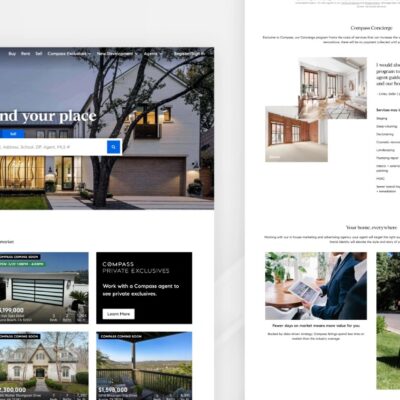In the ever-evolving world of digital design, two terms frequently appear: UX and UI. Though often used interchangeably, User Experience (UX) and User Interface (UI) represent distinct aspects of the design process. Understanding the differences—and how they work together—is essential for anyone involved in creating websites, apps, or digital products. Whether you’re a business owner, designer, developer, or just curious, grasping the nuances of UX and UI will help you build better, more engaging user experiences.
What is UX (User Experience) Design?
UX design is all about the overall experience a user has while interacting with a product or service. It encompasses every touchpoint a user has with a brand—from navigating a website to contacting customer service. The goal of UX design is to create seamless, efficient, and enjoyable experiences that meet the user’s needs and expectations.
A UX designer’s responsibilities often include:
- User research: Understanding who the users are, what they need, and how they behave.
- Information architecture: Structuring content in a way that’s logical and easy to navigate.
- Wireframing and prototyping: Sketching out and testing potential design solutions.
- Usability testing: Gathering feedback from real users to refine the experience.
In short, UX design is strategic. It focuses on the user’s journey, ensuring that each step—whether clicking a button or filling out a form—is intuitive and frictionless.
What is UI (User Interface) Design?
UI design, on the other hand, is concerned with the look and feel of a product’s interface. It’s the layer that users interact with—the visual elements such as buttons, icons, spacing, typography, and colors. If UX is the blueprint of a building, UI is the interior design.
UI designers focus on:
- Visual design: Creating aesthetically pleasing interfaces that align with brand identity.
- Interactive design: Making sure elements behave in predictable ways (e.g., hover effects, animations).
- Consistency: Ensuring uniformity across all screens and platforms.
- Responsiveness: Adapting designs for various devices and screen sizes.
UI design is tactical and artistic, breathing life into the structure that UX designers have mapped out.
UX vs. UI: Key Differences
Although UX and UI are closely linked, they are fundamentally different in terms of their goals, scope, and execution.
| Aspect | UX Design | UI Design |
|---|---|---|
| Focus | User journey and experience | Visual aesthetics and interaction |
| Objective | Solve user problems | Create attractive, intuitive interfaces |
| Tools | Wireframes, flowcharts, personas | Design systems, style guides, mockups |
| Methods | Research, testing, usability analysis | Color theory, typography, grid systems |
| Output | User flows, prototypes, site maps | Visual mockups, UI kits, animations |
In a simplified sense: UX makes interfaces useful; UI makes them beautiful.
Why UX and UI Both Matter
Many successful products owe their appeal to a fine balance between UX and UI. Neglecting one can compromise the effectiveness of the other.
1. A Great UI Without UX Is Like Painting Over Cracks
A sleek, beautiful design might attract users initially, but if it’s hard to navigate or lacks functionality, users will quickly become frustrated. For example, a shopping app with stunning visuals but a confusing checkout process will lead to cart abandonment and lost sales.
2. Great UX Without UI Feels Incomplete
Imagine a well-structured app that delivers exactly what users need—but uses outdated visuals, inconsistent buttons, and dull typography. It might function well, but it won’t delight users or build brand trust. UI gives UX its voice, making the product feel polished and professional.
3. Together, They Build Cohesive Digital Products
When UX and UI are aligned, the result is a product that’s both functional and delightful. UX ensures that the solution fits the user’s needs, and UI ensures that the interaction is enjoyable. This combination improves user satisfaction, increases engagement, and drives loyalty.
Real-World Examples
- Apple: Apple products are often cited for their seamless UX and minimalist UI. Everything from the setup process to daily use is carefully crafted to be intuitive and visually appealing.
- Airbnb: Airbnb’s UX focuses on making travel planning easy, while its UI makes browsing listings and booking a stay enjoyable. The clean visuals and smooth transitions enhance the overall experience.
- Spotify: With intelligent UX in terms of playlist recommendations and navigation, and an eye-catching UI that’s consistent across platforms, Spotify is a benchmark for how UX and UI should work together.
Collaboration Between UX and UI Designers
UX and UI designers often collaborate closely, but their roles require different mindsets and skill sets. Here’s how they typically work together:
- Research & Discovery: UX designers lead the research phase, gathering user insights. UI designers may participate to understand context and constraints.
- Design Strategy: UX creates wireframes and defines flows. UI adds the visual style and interactivity.
- Prototyping & Testing: UX and UI test together, using user feedback to refine the design iteratively.
- Development Handoff: Both designers prepare detailed documentation and assets for developers, ensuring design intent is preserved.
This partnership is not linear but iterative. As the product evolves, UX and UI must remain in sync.
Future of UX and UI
With emerging technologies like AI, AR/VR, and voice interfaces, the lines between UX and UI continue to blur—but their importance only grows. Designers must now consider new types of user interactions while maintaining clarity and ease of use.
Moreover, inclusivity and accessibility are becoming central to both UX and UI. A great design today must work for everyone, regardless of age, ability, or background.
Conclusion
UX and UI are two sides of the same coin. While they involve different skills and focus areas, they are interdependent. UX lays the foundation, ensuring the product solves real problems, while UI adds the finishing touches that make the experience enjoyable and visually cohesive.
In the digital age, users expect more than just functionality—they expect delightful, seamless, and inclusive experiences. That’s why investing in both UX and UI is not just beneficial; it’s essential.
By understanding their unique roles and how they complement each other, teams can create digital products that not only work well but also feel right. After all, it’s not just about how a product looks or functions—it’s about how it makes users feel.



